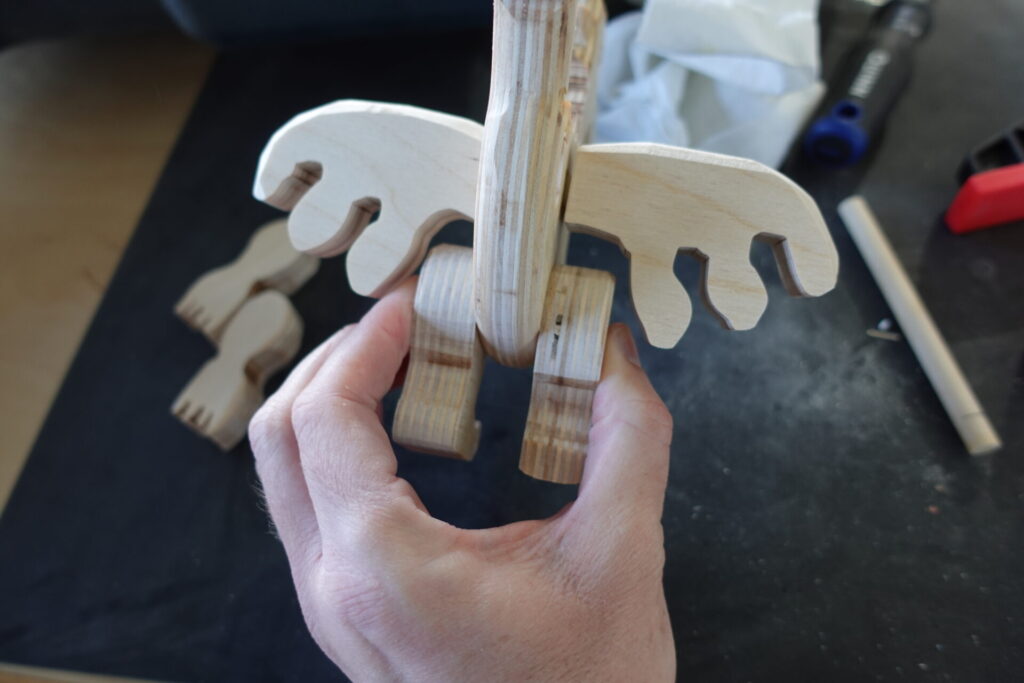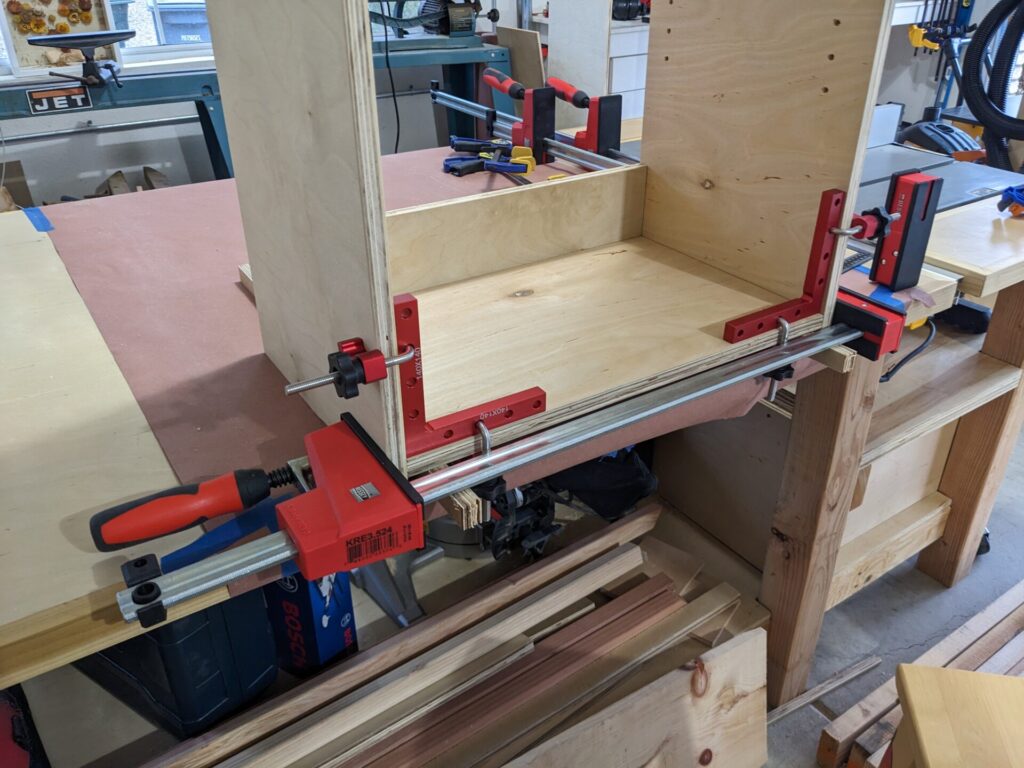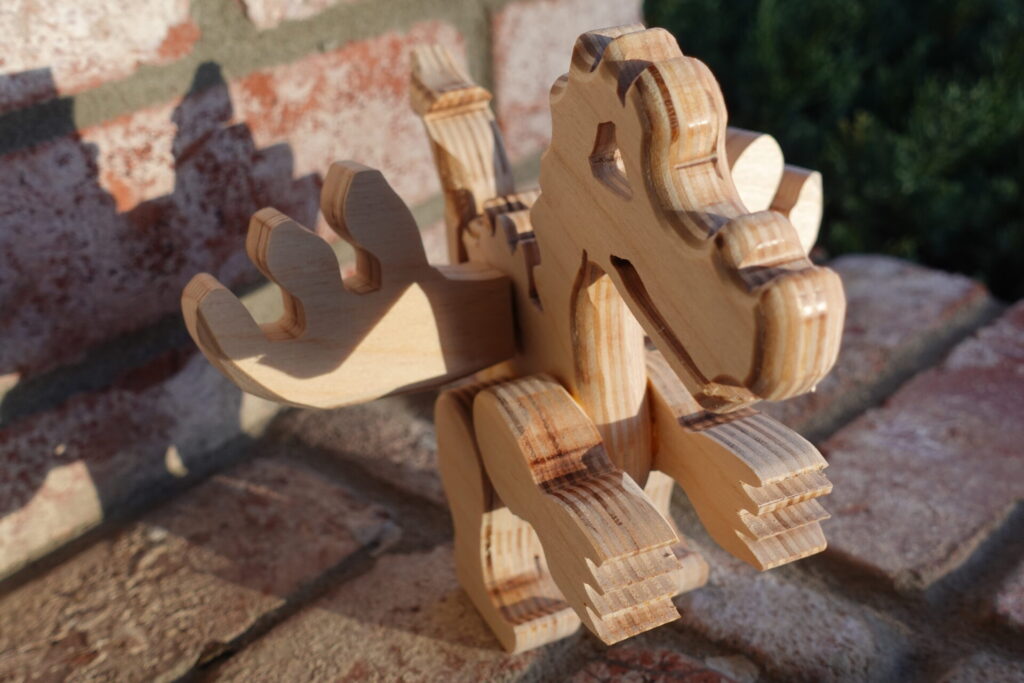There are many benefits to using a stable plywood like Baltic Birch for prototypes. Chief among them is being able to turn an idea into a finished product quickly and without headaches.
Learning From Mistakes
When I first started my wood working projects, I didn’t have much clue about which wood to use. So I would go to a big box store and pick out the cheapest boards I could find. Usually, this was a piece of pine wood that was somewhat straight and had a few knots in it. But as I quickly learned, this was far from ideal because this wood would easily snap and ruin the project. Especially for small wooden pieces, it’s critical to have a stable wood that won’t break in two.
So after screwing up a few pieces with snapped cheap pine wood, I graduated to using hard woods. Species like walnut and maple are more stable but more difficult to cut because they are so dense. Plus, they are more expensive. So I usually recommend saving hard woods for finished products.
Making Prototypes with Baltic Birch

So if we know we want to use hard wood in our finished product, what should we prototype with? My recommendation is to use Baltic Birch Plywood for a few different reasons. Here are some of the advantages:
Benefits of Using Baltic Birch
There are many different varieties of plywood, but on the whole, Baltic Birch (also known as Russian Birch plywood) is considered the holy grail because it’s considered stable and does not bend or bow like a straight board. The thin cores that are glued and pressed together help to ensure that the board will stay straight and flat. This makes them ideal for prototyping because you’ll know you can make consistent angles or joints when putting a project together.
Key Features
- Multi-Ply Construction: Unlike traditional plywood, Baltic Birch Plywood is constructed with multiple layers or plies, typically ranging from 5 to 13 layers.
- Void-Free Core: One of the distinguishing features of Baltic Birch Plywood is its void-free core, which ensures uniform strength and stability throughout the sheet.
- Fine Grain Texture: The fine grain texture of Baltic Birch Plywood makes it ideal for intricate woodworking projects, allowing for precise cutting, shaping, and detailing.
- Exceptional Strength: Thanks to its multi-ply construction and high-quality materials, Baltic Birch Plywood exhibits exceptional strength and resistance to warping, making it suitable for a wide range of applications.
Many Uses
Stability and consistency is why cabinet makers prefer using Baltic Birch. Other uses include:
- Model Making: Baltic birch plywood is often used by hobbyists and model makers for constructing prototypes, architectural models, and scale replicas. Its strength and durability make it suitable for creating detailed and intricate designs.
- Scroll Saw Projects: Baltic birch plywood is popular among scroll saw enthusiasts for creating intricate patterns and designs. It can be used to make decorative ornaments, puzzles, and plaques.
- Marine Applications: Baltic birch plywood with waterproof glue is suitable for marine applications such as boat building and marine furniture due to its resistance to moisture and durability.

Cons of Using Baltic Birch Plywood
We would be remiss if we didn’t include a couple cons of using Baltic Birch plywood. Here are a couple.
Difficult to Find
It’s true that Baltic Birch can be difficult to source. It can be expensive too. But if you’re looking for a good place to buy, check out Woodworker’s Source for current pricing and availability.
Finish Quality
While it’s true you can apply your favorite finish and get great results with Baltic Birch, it’s also arguable that it’s not the most astheticlly pleasing. I guess it’s up to your personal preference, but I would still recommend going with an exotic hard wood for the finished piece so you don’t have the visible lines (cores) showing on the final piece. What do you think?
A Note on Safety
When working with Baltic Birch plywood, it’s essential to use proper safety equipment such as eye protection and dust masks, especially when cutting or sanding the material. The dust produced from sanding and cutting is laced with tons of nasty glue particulates making it essential to wear respiratory protection. Additionally, if you are looking for dust and particulate solutions, check out Timber Topia’s DIY dust filtration and cyclone shop vac solutions.
Give it a Go
So give it a go! Try your hand at some prototypes and see how you like using Baltic Birch plywood. I think you’ll be happy with its stability, durability, and consistency.
